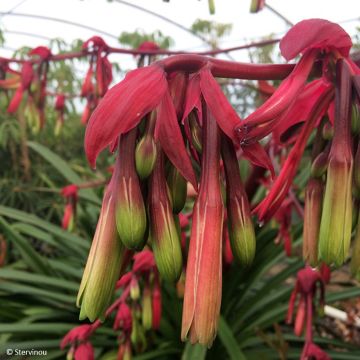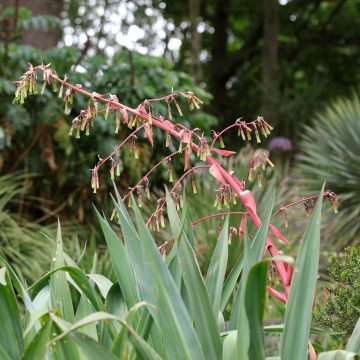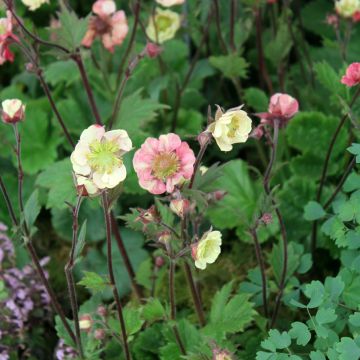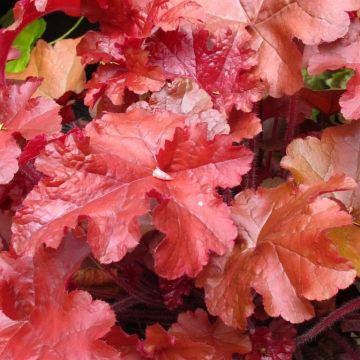

Beschorneria septentrionalis


Beschorneria septentrionalis
View more pictures
Hide images

Virginie A.

No text to translate.
Virginie A. • 79 FR

Angélique F.

Angélique F. • 21 FR
Beschorneria septentrionalis
Beschorneria septentrionalis
Northern Beschorneria
Perfect!
Karin, 16/04/2025
Special offer!
Receive a €20 voucher for any order over €90 (excluding delivery costs, credit notes, and plastic-free options)!
1- Add your favorite plants to your cart.
2- Once you have reached €90, confirm your order (you can even choose the delivery date!).
3- As soon as your order is shipped, you will receive an email containing your voucher code, valid for 3 months (90 days).
Your voucher is unique and can only be used once, for any order with a minimum value of €20, excluding delivery costs.
Can be combined with other current offers, non-divisible and non-refundable.
Home or relay delivery (depending on size and destination)
Schedule delivery date,
and select date in basket
This plant carries a 12 months recovery warranty
More information
We guarantee the quality of our plants for a full growing cycle, and will replace at our expense any plant that fails to recover under normal climatic and planting conditions.

Would this plant suit my garden?
Set up your Plantfit profile →
Description
Beschorneria septentrionalis is a beautiful botanical species native to the mountains of northeastern Mexico, named and described recently in 1988. The plant, with its narrow and flexible foliage arranged in a rosette, greatly resembles Beschorneria yuccoides. It is distinguished by its floral stem, more slender but equally spectacular, of a much brighter red-pink, and its foliage of a lighter, more vibrant green. Its growth is more modest, and its more northern origins give it better resistance to dry cold. This rhizomatous perennial plant develops a tall, very red inflorescence in summer, which seems to bend on one side under the weight of tubular flowers laden with nectar. Vigorous and adaptable, it is ideal for structuring a dry or Mediterranean garden.
Beschorneria septentrionalis is, despite its desert-like appearance, a magnificent and authentic perennial plant of edges and clear undergrowth, perfectly adaptable to our temperate climates not too cold. It originates from a mountainous and arid region located in northeastern Mexico, called the Eastern Sierra Madre, which dominates neighboring Texas. This botanical species of the Agave family is related to Yuccas, to which it bears resemblance, or even to the Tuberose. In nature, it is often found growing in sparse woods of oaks and pines, at high altitudes. This perennial succulent herbaceous plant has rhizomes capable of producing suckers, but is almost devoid of aerial stems. It forms a basal rosette, 50 to 70cm (20 to 28in) high and 50m (164ft) wide. The leaves, pointed, are evergreen, lanceolate, non-prickly. They are smooth, flexible, mature to a vibrant green colour, and show ends bent outward. The spectacular flowering takes place from May to August, depending on the year. The fleshy floral stem, of magenta red-pink colour, can reach a height of 1.50m (5ft) to 1.80m (6ft). Invariably arched towards the ground and facing south, it bears many tubular and trailing flowers that are both unusual and beautiful; the corolla, of a very bright green, discreet, is surrounded by very decorative red-pink bracts. This highly honey-producing and nectar-producing flowering attracts many pollinating insects. The plant is hardy down to -15°C (5°F) in perfectly well-draining soil. When the foliage is destroyed by frost, it regrows from the stump. This species has the ability to produce suckers that ensure its perenniality.
In regions not too cold, experiencing winters without excessive humidity, this Beschorneria is ideal for structuring a large rockery, an exotic bed or for brilliantly occupying the edge of an undergrowth, between the roots of old trees. It can be planted alone or associated on a dry slope with Agave americana, prickly pear, giant fennel, fairly hardy candle cacti (Cleistocactus strausii, Cylindropuntia imbricata) and Yucca rigida, very blue and equally undemanding. On the edge of the undergrowth, it will accompany Phlomis samia, Acanthus mollis, Dicliptera suberecta, and Digitalis lanata. Gardeners in cold and humid regions will install it in a very large pot on the terrace, right next to a giant Restio, choosing the most sheltered spot carefully, and in full sun. Beschorneria brings a lot of exoticism to the garden and requires very little maintenance. These plants can become invasive where they thrive.
Report an error about the product description
Beschorneria septentrionalis in pictures






Flowering
Foliage
Plant habit
Botanical data
Beschorneria
septentrionalis
Agavaceae
Northern Beschorneria
North America
Other Beschorneria
View all →Planting and care
Plant Beschorneria septentrionalis in spring in cold regions, in autumn in milder climates. Place it in full sun in cool climates or in partial shade in hot and dry climates, in a regular soil that is not too heavy, loamy, sandy or even rocky, slightly acidic, neutral or slightly alkaline, but well-drained: It is sensitive to winter humidity and cold, and perfectly tolerates dry soils in summer, under the cover of trees. Under these conditions, it can withstand fairly intense frosts, up to about -15°C (5°F). As the plant reaches a large size, it should be cultivated in very large pots, preferably in terracotta or wooden containers. It should be stored indoors or in a cold greenhouse during winter, protected from heavy frosts, outside the mildest regions of our country. Propagation by sowing in spring.
Planting period
Intended location
Care
-
, onOrder confirmed
Reply from on Promesse de fleurs
Similar products
Haven't found what you were looking for?
Hardiness is the lowest winter temperature a plant can endure without suffering serious damage or even dying. However, hardiness is affected by location (a sheltered area, such as a patio), protection (winter cover) and soil type (hardiness is improved by well-drained soil).

Photo Sharing Terms & Conditions
In order to encourage gardeners to interact and share their experiences, Promesse de fleurs offers various media enabling content to be uploaded onto its Site - in particular via the ‘Photo sharing’ module.
The User agrees to refrain from:
- Posting any content that is illegal, prejudicial, insulting, racist, inciteful to hatred, revisionist, contrary to public decency, that infringes on privacy or on the privacy rights of third parties, in particular the publicity rights of persons and goods, intellectual property rights, or the right to privacy.
- Submitting content on behalf of a third party;
- Impersonate the identity of a third party and/or publish any personal information about a third party;
In general, the User undertakes to refrain from any unethical behaviour.
All Content (in particular text, comments, files, images, photos, videos, creative works, etc.), which may be subject to property or intellectual property rights, image or other private rights, shall remain the property of the User, subject to the limited rights granted by the terms of the licence granted by Promesse de fleurs as stated below. Users are at liberty to publish or not to publish such Content on the Site, notably via the ‘Photo Sharing’ facility, and accept that this Content shall be made public and freely accessible, notably on the Internet.
Users further acknowledge, undertake to have ,and guarantee that they hold all necessary rights and permissions to publish such material on the Site, in particular with regard to the legislation in force pertaining to any privacy, property, intellectual property, image, or contractual rights, or rights of any other nature. By publishing such Content on the Site, Users acknowledge accepting full liability as publishers of the Content within the meaning of the law, and grant Promesse de fleurs, free of charge, an inclusive, worldwide licence for the said Content for the entire duration of its publication, including all reproduction, representation, up/downloading, displaying, performing, transmission, and storage rights.
Users also grant permission for their name to be linked to the Content and accept that this link may not always be made available.
By engaging in posting material, Users consent to their Content becoming automatically accessible on the Internet, in particular on other sites and/or blogs and/or web pages of the Promesse de fleurs site, including in particular social pages and the Promesse de fleurs catalogue.
Users may secure the removal of entrusted content free of charge by issuing a simple request via our contact form.
The flowering period indicated on our website applies to countries and regions located in USDA zone 8 (France, the United Kingdom, Ireland, the Netherlands, etc.)
It will vary according to where you live:
- In zones 9 to 10 (Italy, Spain, Greece, etc.), flowering will occur about 2 to 4 weeks earlier.
- In zones 6 to 7 (Germany, Poland, Slovenia, and lower mountainous regions), flowering will be delayed by 2 to 3 weeks.
- In zone 5 (Central Europe, Scandinavia), blooming will be delayed by 3 to 5 weeks.
In temperate climates, pruning of spring-flowering shrubs (forsythia, spireas, etc.) should be done just after flowering.
Pruning of summer-flowering shrubs (Indian Lilac, Perovskia, etc.) can be done in winter or spring.
In cold regions as well as with frost-sensitive plants, avoid pruning too early when severe frosts may still occur.
The planting period indicated on our website applies to countries and regions located in USDA zone 8 (France, United Kingdom, Ireland, Netherlands).
It will vary according to where you live:
- In Mediterranean zones (Marseille, Madrid, Milan, etc.), autumn and winter are the best planting periods.
- In continental zones (Strasbourg, Munich, Vienna, etc.), delay planting by 2 to 3 weeks in spring and bring it forward by 2 to 4 weeks in autumn.
- In mountainous regions (the Alps, Pyrenees, Carpathians, etc.), it is best to plant in late spring (May-June) or late summer (August-September).
The harvesting period indicated on our website applies to countries and regions in USDA zone 8 (France, England, Ireland, the Netherlands).
In colder areas (Scandinavia, Poland, Austria...) fruit and vegetable harvests are likely to be delayed by 3-4 weeks.
In warmer areas (Italy, Spain, Greece, etc.), harvesting will probably take place earlier, depending on weather conditions.
The sowing periods indicated on our website apply to countries and regions within USDA Zone 8 (France, UK, Ireland, Netherlands).
In colder areas (Scandinavia, Poland, Austria...), delay any outdoor sowing by 3-4 weeks, or sow under glass.
In warmer climes (Italy, Spain, Greece, etc.), bring outdoor sowing forward by a few weeks.












































